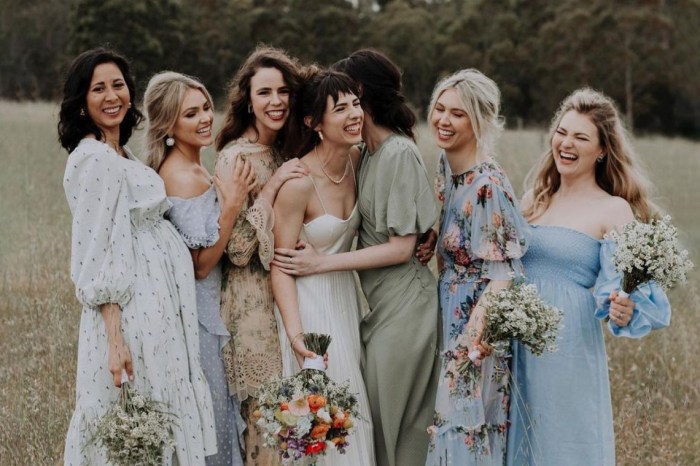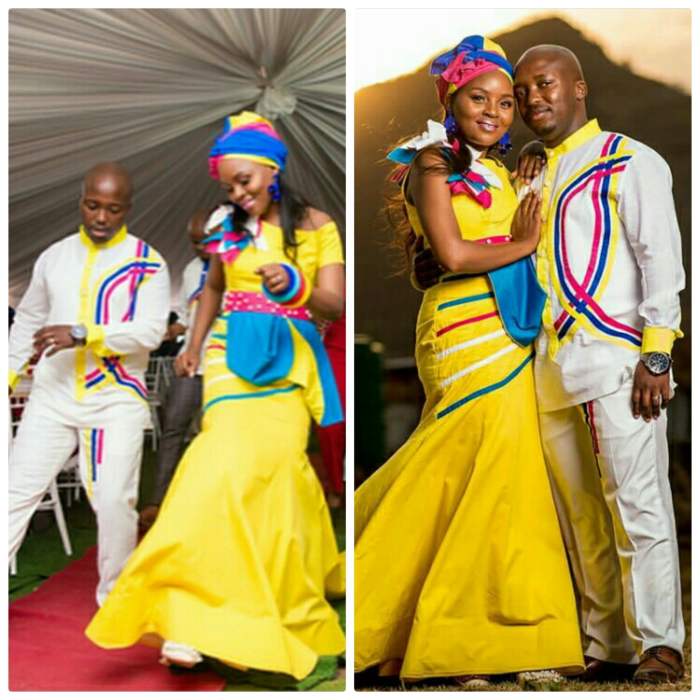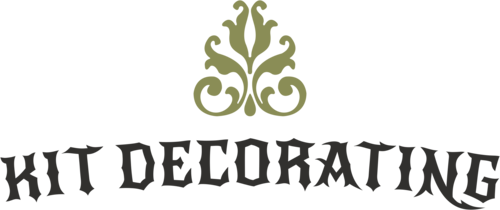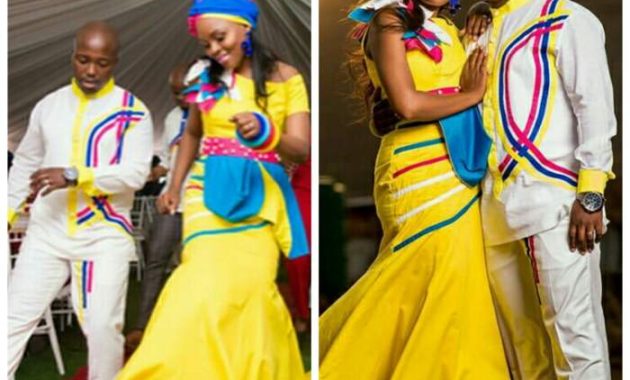Formal Wedding Attire: A Guide for Guests: Formal Dress To Wear To A Wedding
Formal dress to wear to a wedding – Attending a formal wedding requires careful consideration of your attire. Choosing the right outfit shows respect for the couple and ensures you feel confident and comfortable throughout the celebration. This guide will provide a comprehensive overview of appropriate formal wedding attire for both men and women, covering various aspects from fabric choices to accessory selection and etiquette.
Types of Formal Wedding Attire
The type of attire appropriate for a wedding depends heavily on the level of formality specified on the invitation. Understanding the distinctions between different attire types is crucial for making an informed choice.
| Men’s Attire | Description | Women’s Attire | Description |
|---|---|---|---|
| Tuxedo | A formal evening suit, typically black or midnight blue, featuring a dinner jacket with satin lapels and matching trousers. | Floor-Length Gown | An elegant, formal gown that typically reaches the floor. Often made from luxurious fabrics like silk or satin. |
| Suit | A more versatile option than a tuxedo, a suit can be appropriate for semi-formal weddings, depending on the fabric and style. Darker colors are generally preferred. | Cocktail Dress | A knee-length or slightly below-the-knee dress, suitable for semi-formal weddings. Can be made from a variety of fabrics. |
| Morning Suit | A formal daytime attire for weddings, typically worn before 6 pm. It features a tailcoat, striped trousers, and a waistcoat. | Jumpsuit | A stylish alternative to a dress, especially for modern or less traditional weddings. Should be made from a formal fabric and have a sophisticated design. |
A tuxedo is typically required for black-tie events, while a suit is generally appropriate for semi-formal or cocktail attire. Morning suits are reserved for formal daytime weddings.
Fabrics and Materials for Formal Wedding Attire

Source: pressablecdn.com
Fabric selection significantly impacts the overall look and feel of your outfit. The choice should consider the season, the formality of the event, and personal preference.
- Silk: Luxurious, drapes well, suitable for all seasons (though heavier silks are better for cooler months).
- Velvet: Rich texture, ideal for cooler months, adds a touch of opulence.
- Lace: Delicate and feminine, perfect for warmer months, often used for embellishment.
- Linen: Breathable and lightweight, suitable for warmer climates and summer weddings. However, it can wrinkle easily.
- Wool: Warm and durable, best for cooler months, provides structure and elegance.
Fabrics to avoid include overly casual materials like denim, cotton jersey, and anything overly sheer or revealing.
Color and Style Considerations for Formal Wedding Attire

Source: co.uk
Color and style choices should align with the wedding’s theme, venue, and time of day. Certain colors and styles are generally more appropriate for formal occasions.
- Appropriate Colors: Navy, black, deep jewel tones (emerald, sapphire, ruby), pastels (for daytime weddings).
- Inappropriate Colors: White (unless specifically requested by the bride), bright neon shades, overly casual colors.
Necklines, sleeve lengths, and silhouettes should complement your body type and the overall style of the outfit. A floor-length gown with a classic neckline is generally suitable for a formal wedding, while a cocktail dress offers more versatility.
Examples of color palettes include: A navy and gold palette for a classic wedding; blush pink and ivory for a romantic wedding; deep emerald and burgundy for an autumnal wedding.
Choosing the right formal dress for a wedding can be a delightful yet daunting task. For inspiration, consider the unique aesthetic of corpse bride victoria wedding dress , which showcases a dramatic and unconventional approach to bridal fashion. While not necessarily appropriate for all weddings, it highlights the breadth of possibilities when selecting a formal garment, ultimately reminding us that personal style should guide the final decision.
Accessories for Formal Wedding Attire
Accessories can elevate your outfit and add a personal touch. However, it’s important to choose accessories that complement your outfit without overshadowing it.
- Men: Cufflinks, bow tie, pocket square, dress shoes, watch.
- Women: Jewelry (earrings, necklace, bracelet), clutch, heels, elegant hairstyle.
Accessories should be chosen to coordinate with the overall wedding theme and the color palette of your outfit. Avoid overly flashy or distracting accessories.
Etiquette and Considerations for Guests, Formal dress to wear to a wedding

Source: clipkulture.com
Wedding invitations often provide guidance on the appropriate attire. Understanding the dress code is crucial for selecting an outfit that is both respectful and appropriate.
- Black-tie optional: A tuxedo or a dark suit is acceptable.
- Semi-formal: A suit or cocktail dress is generally appropriate.
Consider the venue and time of day. A daytime wedding might call for lighter colors and fabrics than an evening wedding. Avoid outfits that are too casual, revealing, or distracting.
Examples of inappropriate outfits include jeans, sneakers, t-shirts, overly short dresses, and anything too revealing.
Illustrative Examples of Formal Wedding Attire
Here are some examples of appropriate formal wedding attire for both men and women:
Woman’s Outfit 1: A floor-length silk gown in a deep emerald green, featuring a V-neckline and delicate lace detailing. Accessories include emerald drop earrings, a matching clutch, and elegant heels.
Woman’s Outfit 2: A knee-length navy cocktail dress with a subtle A-line silhouette. The dress is made from a luxurious crepe fabric. Accessories include pearl stud earrings, a small silver clutch, and elegant ankle strap heels.
Woman’s Outfit 3: A sophisticated jumpsuit in blush pink silk. The jumpsuit features wide legs and a halter neckline. Accessories include delicate gold necklace, a small blush-colored clutch, and strappy heels.
Men’s Outfit 1: A classic black tuxedo with a satin lapel, paired with a crisp white shirt, black bow tie, and polished black dress shoes. Accessories include silver cufflinks and a silk pocket square.
Men’s Outfit 2: A navy blue suit with a subtle check pattern. The suit is paired with a light blue shirt, a dark blue tie, and brown leather dress shoes. Accessories include a silver watch and a patterned pocket square.
Men’s Outfit 3: A charcoal grey suit with a slim fit. The suit is paired with a white shirt, a dark grey tie, and black dress shoes. Accessories include simple silver cufflinks and a plain white pocket square.
FAQs
What if the invitation doesn’t specify a dress code?
If the invitation doesn’t specify a dress code, it’s generally safe to assume semi-formal attire. Contact the couple or a close friend if you’re still unsure.
Can I wear a dress that’s too short to a formal wedding?
No, avoid dresses that are too short. Floor-length or tea-length dresses are generally appropriate for formal weddings. Cocktail dresses are acceptable for semi-formal events.
What kind of shoes are appropriate for men attending a formal wedding?
Men should wear formal leather shoes, such as oxfords or loafers, that complement their outfit. Avoid sneakers or sandals.
Is it okay to wear white to a wedding?
Generally, it’s best to avoid wearing white to a wedding, as it can be mistaken for the bride’s attire. Choose a different color that complements your skin tone and the wedding theme.

